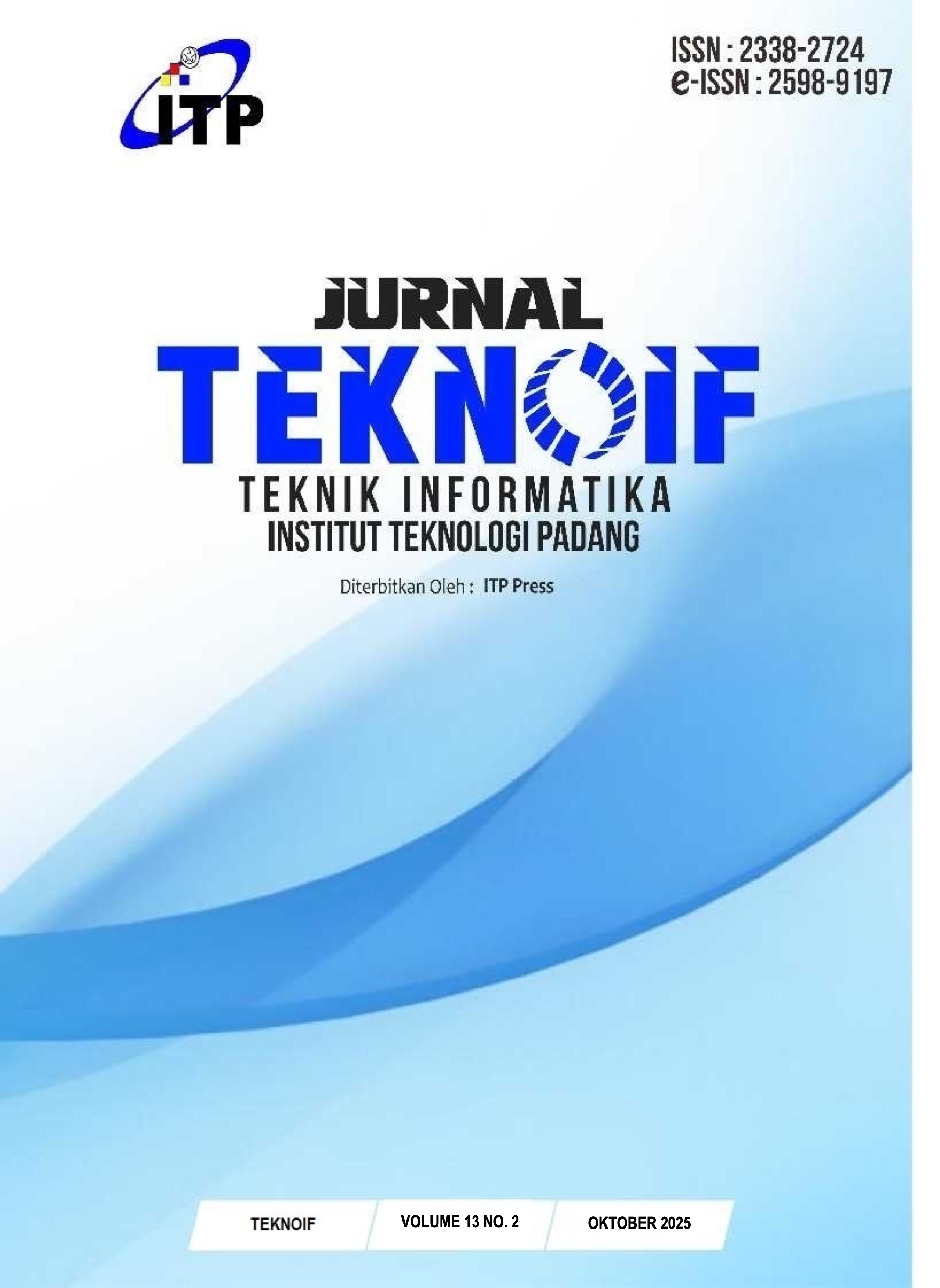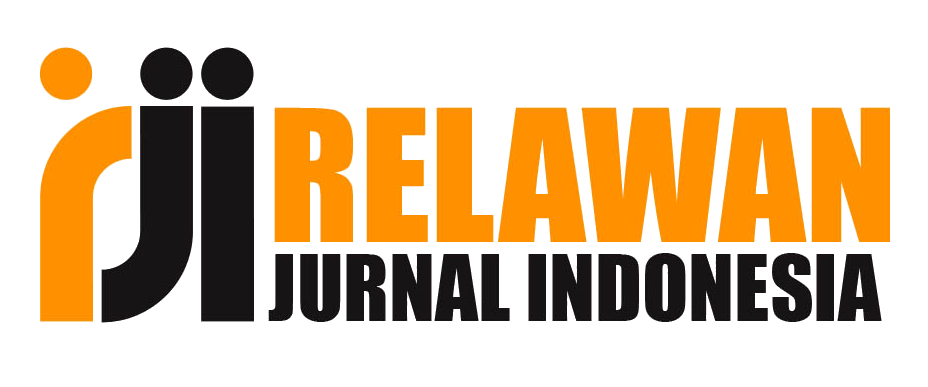CLASSIFICATION OF TRAFFIC TICKET CASES AT THE PAGAR ALAM DISTRICT ATTORNEY'S OFFICE USING THE C4.5 ALGORITHM
DOI:
https://doi.org/10.21063/jtif.2025.V13.2.57-65Keywords:
Classification, Data Mining, C4.5 AlgorithmAbstract
The increasing number of traffic violations in Pagar Alam City has led to a yearly rise in ticketing case data at the Pagar Alam District Attorney’s Office. This accumulation of data creates difficulties in effective data management and hinders the extraction of meaningful insights. The current classification process for ticketing cases remains limited in its accuracy and efficiency, making it difficult to identify patterns or trends. This study aims to address this issue by developing a classification model for traffic ticket cases using data mining techniques, specifically the C4.5 algorithm. The model classifies cases based on attributes such as the relevant article of law, type of vehicle, evidence submitted, and the fine imposed. The CRISP-DM framework is used to guide the process through six phases: business understanding, data understanding, data preparation, modeling, evaluation, and deployment. RapidMiner is used as the primary tool for data processing, and the model is evaluated using the X-Cross Validation technique. The results show that the C4.5 algorithm achieves a high classification accuracy of 99.75%. The “Article” attribute emerged as the most influential factor with the highest gain ratio value. These findings can support law enforcement and policymakers in identifying the most frequent violations and developing more targeted strategies to improve traffic law enforcement and public safety.
References
[1] E. Dewi, S. Mulyani, A. M. Yusup, A. K. Tisna, F. A. Fauzi, I. B. Seta, R. Khairunas, and W. Ardiansyah, “Clustering wilayah dan pelanggaran berkendaraan menggunakan algoritma K-Means pada data Satlantas Polres Tasikmalaya Kota,” e-Jurnal JUSITI (Jurnal Sistem Informasi dan Teknologi Informasi), vol. 8-1, no. 1, pp. 1–11, 2019. doi: 10.36774/jusiti.v8i1.595.
[2] N. L. Mauliddiyah, “Analisis cluster dan pemodelan pelanggaran lalu lintas menggunakan metode K-Means clustering studi kasus Kota Bandung,” p. 6, 2021.
[3] M. Suttri, “Pelaksanaan Electronic Traffic Law Enforcement (ETLE) Mobile di Kota Pekanbaru (Studi pada Ditlantas Polda Riau),” J. Public Adm. Rev., vol. 1, no. 1, pp. 389–406, 2024.
[4] P. B. N. Setio, D. R. S. Saputro, and B. Winarno, “Klasifikasi melalui pohon keputusan berbasis algoritme C4.5,” Prisma: Prosiding Seminar Nasional Matematika, vol. 3, pp. 64–71, 2020.
[5] R. D. B. Febriyanto, L. Handoko, and H. Aisyah, “Klasifikasi penyebaran Covid-19 menggunakan pendahuluan studi literatur,” vol. 4, pp. 23–35, 2021.
[6] F. F. Nugraha, I. Sunandar, and C. Julian, “Penerapan data mining melalui metode klasifikasi menggunakan algoritma C4.5,” Teknologi, vol. 7, no. Mar., pp. 10–20, 2022. doi: 10.35957/jatisi.v9i4.2399.
[7] A. Lazuardy, F. A. Homaidi, and A. Lutfi, “Perbandingan metode klasifikasi pengujian kendaraan bermotor melalui algoritma C4.5 dan Naïve Bayes,” vol. 19, no. Sep., pp. 140–154, 2024. doi: 10.30587/e-link.v19i2.8113
[8] T. R. Matondang, Y. R. Nasution, Armansyah, and M. Furqan, “Penerapan algoritma C4.5 pada klasifikasi status gizi balita,” J. Fasilkom, vol. 14, no. 1, pp. 216–225, 2024. doi: 10.37859/jf.v14i1.6941.
[9] M. Soleh, “Algoritma C4.5 dalam mengklasifikasi tindak kejahatan yang sering terjadi di Kecamatan Siantar Barat Pematangsiantar,” TIN: Terapan Informatika Nusantara, vol. 2, no. 5, pp. 335–340, 2021.
[10] Sutisna and N. M. Yuniar, “Klasifikasi kualitas air bersih menggunakan metode Naïve Bayes,” J. Sains dan Teknologi, vol. 5, no. 1, pp. 243–246, 2023.
[11] M. S. Othman, R. A. Rahman, and A. R. Hamdan, “A data mining approach for classification of traffic violations types,” Int. J. Adv. Intell. Inform., vol. 7, no. 3, pp. 282–291, 2021, doi: 10.26555/ijain.v7i3.708.
[12] W. Xuanyuan, Y. Zhang, and C. Liu, “Application of C4.5 algorithm in insurance and financial services using data mining methods,” Mobile Information Systems, 2022, Article ID 5670784, doi: 10.1155/2022/5670784.
[13] G. I. Salama, M. B. Abdelhalim, and M. A. E. Zeid, “Very fast C4.5 decision tree algorithm,” Applied Artificial Intelligence, vol. 32, no. 2, pp. 119–137, 2018, doi: 10.1080/08839514.2018.1447479.
[14] F. Martínez-Plumed et al., “A systematic literature review on applying CRISP-DM process model,” Procedia Computer Science, vol. 181, pp. 526–534, 2021, doi: 10.1016/j.procs.2021.01.199.
[15] S. Huber, H. Wiemer, D. Schneider, and S. Ihlenfeldt, “DMME: Data mining methodology for engineering applications – A holistic extension to the CRISP-DM model,” Procedia CIRP, vol. 79, pp. 403–408, 2019, doi: 10.1016/j.procir.2019.02.106.
[16] W. Y. Ayele, “Adapting CRISP-DM for idea mining: A data mining process for generating ideas using a textual dataset,” Int. J. Adv. Comput. Sci. Appl., vol. 11, no. 6, pp. 23–32, 2020, doi: 10.14569/IJACSA.2020.0110603.
[17] P. Chen, “Design of intelligent traffic simulation system based on decision tree algorithm,” in Proc. 2nd Int. Conf. Artificial Intelligence and Information Systems, 2021, pp. 1–3, doi: 10.1145/3469213.3472778.
[18] M. Al-Barrak and M. Al-Razgan, “Predicting students final GPA using decision trees: A case study,” Int. J. Inf. Educ. Technol., vol. 6, no. 7, pp. 528–533, 2016, doi: 10.7763/IJIET.2016.V6.745.
[19] Y. Sahin and E. Duman, “Detecting credit card fraud by decision trees and support vector machines,” in Proc. Int. MultiConf. Engineers and Computer Scientists, vol. 1, pp. 442–447, 2011, doi: 10.1109/WISA.2009.36.
[20] W. Y. Loh, “Classification and regression trees,” Wiley Interdisciplinary Reviews: Data Mining and Knowledge Discovery, vol. 1, no. 1, pp. 14–23, 2011, doi: 10.1002/widm.8.
[21] B. S. D. Nugraha, S. Defit, and G. W. Nurcahyo, “Algoritma C4.5 untuk prediksi bimbingan siswa berdasarkan tipologi Hippocrates-Galenus,” J. Teknoif Tek. Inform. Inst. Teknol. Padang, vol. 11, no. 1, pp. 1–8, 2023, doi: 10.21063/jtif.2023.V11.1.1-8.
Downloads
Published
Issue
Section
License
Copyright (c) 2025 Sabella Azhari, Muntahanah

This work is licensed under a Creative Commons Attribution-ShareAlike 4.0 International License.
This journal is licensed under a Creative Commons Attribution-ShareAlike 4.0 International License (CC BY-SA 4.0).
Authors retain copyright and grant the journal the right of first publication.
The work may be shared and adapted, even for commercial purposes, as long as appropriate credit is given and any new creations are licensed under the identical terms.
















